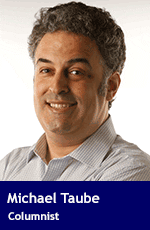 The U.S. has frequently faced controversy over renaming buildings and removing monuments in the South due to historical grievances related to slavery and racism.
The U.S. has frequently faced controversy over renaming buildings and removing monuments in the South due to historical grievances related to slavery and racism.
In recent weeks, Canada has seen a flurry of similar activity.
First, the federal Liberal government renamed Langevin Block in Ottawa to the Office of the Prime Minister and Privy Council. This was due to concerns about Hector-Louis Langevin (1826-1906), one of this country’s Fathers of Confederation, and his role with the controversial residential school system.
Then the student union and Indigenous Students Association at Toronto’s Ryerson University suggested the institution change its name. They’re concerned about the role Egerton Ryerson’s (1803-1882) had in the residential school system, and agree that the Methodist minister and public educator contributed to “cultural genocide.”
Finally, a Facebook event called “Removing Cornwallis” proposed that people “peacefully” remove a statue in a Halifax park. The perspective was that Edward Cornwallis (1713-1776), a British military officer who was governor of Halifax and Gibraltar, was underserving of a statue because of his poor treatment of First Nations people.
You may notice an intriguing pattern in these cases.
I opposed the decision to rename Langevin Block, where I worked when I was a speechwriter for Prime Minister Stephen Harper. (I can’t recall one instance where a Conservative or Liberal staffer expressed the slightest concern about spending time in a building with this name.) I also oppose proposals related to Ryerson and Cornwallis, much the same way I opposed the various name changes and statute removals in the U.S.
Throughout Canadian history buildings, statues and landmarks were named after prominent individuals who either did awful things, made bigoted statements against certain individuals and groups, or have other skeletons in their closets. There will almost always be somebody, somewhere, who has a grievance and wants to change a name and/or remove an object as quickly as possible.
Where does it end? Are these names causing such an emotional upheaval in society – and, if renamed or removed, will it really have a long-lasting effect?
We shouldn’t ignore history or attempt to rewrite it because some people have a hard time with certain figures and periods that we have long moved past as a nation.
A snowflake mentality is overtaking Canadian discourse when it comes to deciding the fate of historical landmarks.
There’s also free speech to consider.
Individuals who claim any opposition to these name changes and/or statue removals must be rooted in racism weaken their case. Some people simply believe that history should be preserved in all ways, shapes and forms. The important thing to do is teach our children about these historical figures and explain what they did or didn’t do correctly in their era.
We need to start accepting that most historical figures are, like us, imperfect. We should examine the good and bad of each historical figure, and not consistently take a one-sided perspective.
Above all, we must stop this ridiculous trend of renaming edifices and removing evidence of people’s existence. If not, there could be very little left in the near future.
Canada needs more awareness of history, not more obliviousness (and crocodile tears) about our past.
Michael Taube, a Troy Media syndicated columnist and Washington Times contributor, was a speechwriter for former prime minister Stephen Harper. He holds a master’s degree in comparative politics from the London School of Economics.
The views, opinions and positions expressed by columnists and contributors are the author’s alone. They do not inherently or expressly reflect the views, opinions and/or positions of our publication.

